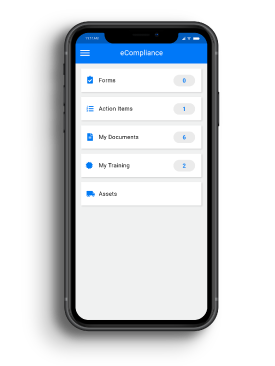- SOLUTIONS
- ENGAGING THE WORKFORCE
- HAZARD ASSESSMENT
- OBSERVATIONS & EVENTS
- INSPECTIONS
- TOOLBOX TALKS
- ELEARNING
- OTHER SOLUTIONS
- FIELD ID
- LOCKOUT & TAGOUT
- INTEGRATIONS
- AUDITS & INSPECTIONS
- Close
- INDUSTRIES
- Infrastructure – https://www.ecompliance.com/wp-content/uploads/2017/10/MEGA_NAV_INFRASTRUCTURE.jpg
- Utilities – https://www.ecompliance.com/wp-content/uploads/2017/10/MEGA_NAV_UTILITIES.jpg
- Energy – https://www.ecompliance.com/wp-content/uploads/2017/10/MEGA_NAV_ENERGY.jpg
- Construction – https://www.ecompliance.com/wp-content/uploads/2017/10/MEGA_NAV_CONSTRUCTION.jpg
- Manufacturing – https://www.ecompliance.com/wp-content/uploads/2017/10/MEGA_NAV_MANUFACTURING.jpg
- Mining – https://www.ecompliance.com/wp-content/uploads/2017/10/MEGA_NAV_MINING.jpg
- Close
- COMPANY
- PRICING
- BLOG

SAFETY NERD INSIDER | OCTOBER 2020
Helping You Scale
Discover how to get more value out of eCompliance and Field iD as we dive into the most underused but extremely valuable features in our products. We will also touch on why asset safety matters, and more…
FEATURED THIS MONTH:

eC
Insider
Featured Resource
Thought Leadership

Product
Updates

Support
Tip
FEATURED THIS MONTH:
eC Insider
Why Asset Safety Matters
Learn more about Field iD and the true value of a robust asset inspection system with our Director of Engineering, Gregory Johnson.
eC Insider
Why Asset Safety Matters
Learn more about Field iD and the true value of a robust asset inspection system with our Director of Engineering, Gregory Johnson.
Featured Resource
The eCompliance Toolbox
Find out how the eCompliance system can help you navigate this pandemic safely with these tips.
Featured Resource
The eCompliance Toolbox
Find out how the eCompliance system can help you navigate this pandemic safely with these tips.
Thought Leadership
Find Out Your Safety Maturity Level
At eCompliance, we’re all about helping you grow and get to the next level with the latest in safety technology. The only way to do that effectively is to find out your safety maturity level or how advanced your organization’s safety program is. Want to know where you rank on the safety maturity scale?
Here are the three categories that you could fall into:
- Beginner
As a beginner, organizations at this stage do what is needed to attain and maintain compliance with the minimum regulations necessary to carry out daily tasks. The focus is purely on completing the job at hand, rather than making sure all the necessary precautions are taken to mitigate risks. Data and information, prone to human error, is tracked on paper or Excel sheets, with little to no insight into the overall safety program, and safety managers are only there to enforce orders to an unengaged front-line workforce.
- Intermediate
At this stage, companies are more invested in safety to protect their workforce. Safety is recognized as a positive factor by all members, from the boardroom to the frontlines, which helps to give greater insight into the company’s performance and boost its return on investment. Workers are also fully engaged and give feedback to help strengthen the safety culture, with regular training to keep them aware of any and all changes.
- Advanced
Those who fall in this category know that safety is the secret ingredient to their organization’s success. With a strong safety record and complete buy-in from the top down, safety is used to drive revenue growth with access to more opportunities in the market. Here, data and information is used to make high-level, fact-based decisions to drive growth and protect the workforce.
To read more about these different categories, please check out our blog: “A Deep Dive into Safety Maturity”.
Ready to find out where you rank in less than two minutes? Take our Safety Maturity Level Quiz and speak to your Customer Success Coach about your results, in addition to how you can get to the next level!
Thought Leadership
Find Out Your Safety Maturity Level
At eCompliance, we’re all about helping you grow and get to the next level with the latest in safety technology. The only way to do that effectively is to find out your safety maturity level, or how advanced your organization’s safety program is. Want to know where you rank on the safety maturity scale?
Here are the three categories that you could fall into:
- Beginner
As a beginner, organizations at this stage do what is needed to attain and maintain compliance with the minimum regulations necessary to carry out daily tasks. The focus is purely on completing the job at hand, rather than making sure all the necessary precautions are taken to mitigate risks. Data and information is poorly tracked on paper or Excel sheets, with little to no insight into the overall safety program and safety managers are only there to enforce orders to an unengaged front-line.
- Intermediate
At this stage, companies are more invested in safety to protect their workforce. Safety is recognized as a positive factor by all members, from the boardroom to the frontlines, which helps to give greater insight into the company’s performance and boost its return on investment. Workers are also fully engaged and give feedback to help strengthen the safety culture, with regular training to keep them aware of any and all changes.
- Advanced
Those who fall in this category know that safety is the secret ingredient to their organization’s success. With a strong safety record and complete buy-in from the top down, safety is used to drive revenue growth with access to more opportunities in the market. Here, data and information is used to make high-level, fact-based decisions to drive growth and protect the workforce.
To read more about these different categories, please check out our blog: “A Deep Dive into Safety Maturity”.
Ready to find out where you rank in less than two minutes? Take our Safety Maturity Level Quiz and speak to your Customer Success Coach about your results, in addition to how you can get to the next level!
Product Updates

Beyond the Numbers Webinar
This month, we held a one-hour review of some of the most underused but high-value features within the eCompliance platform. Time to explore the three features which were top of the list: Action Items, Training Management, and Charts & Reports! Click here to watch the webinar.
Action Items
Action Items allows employees to assign a corrective task to another user to perform and complete. Action Items creates accountability between two employees and allows for visibility on the status of that task with the ability to reference back to that completed action in the future. If you are currently utilizing Action Items, we will also be digging into Action Item origin, configuring Action Item priority and scheduling recurring Action Items.
Training Management
eCompliance provides the ability to manage and track your employee training certificates. This feature allows you to consolidate all training certificates into one place that is readily accessible by computer or mobile, in a system that will track when certificates are expiring/have expired. If you are currently utilizing this tool we will be discussing how to streamline Training Assignment via Job Profiles and how to export the training data using the Training Reports.
Charts & Reports
Pre-built reports extract answers from Inspection, Incident/Hazard, and Meeting forms based on the specific form and timeframe of form completion. This report will allow you to track overall form quota completion by employee, site, or day. It will also give you the ability to view multiple responses to a question overtime and see possible negative trends that should be actioned or positive trends to reward.
Please reach out to your designated Customer Success Coach after watching to learn how to take better advantage of this functionality!
Next month we will be diving into the three most under-utilized yet powerful features that can be leveraged for your business with Field iD! But since we know you don’t want to wait, here’s a little preview of those features just to keep you on the edge of you seat for next month’s webinar!
- Templates in Field iD
Templates in Field iD provide the capability to utilize pre-built templates such as rules setting for an asset attribute. It also gives you access to our library of Asset Types which come with pre-built and customizable checklist templates. This will enable your teams to streamline their workflow and reduce the time spent on building multiple forms, events, etc., just by adding a pre-built and customizable template to your system.
- Report Configuration
Search and build reports from an Asset focus or an Event focus. These reports can be configured to include pertinent information based on your needs. Configure reports to give your team a more robust view of the data and save you time in having to filter and recreate a report to match your needs on a recurring basis.
If you are already utilizing reports and know how to configure them, we will also be going into saving reports that you have filtered and how to set them up on a scheduled email send out in our upcoming webinar!
- Button Groups & Questions Logic
Button Groups and Questions Logic enable configuration of the “One Click Button Question type” to create a library of custom button groups for your users to choose from. Additionally, by leveraging pre-defined Question Logic, you can create rules around specific responses to prompt for more information, additional photos, or assign a corrective action from users to build better visibility and accountability when next steps are needed.
Product Updates

New, Enhanced, and Reliable Reporting
Safety Intelligence enables eCompliance customers to simplify their reporting process. View and share innovative dashboards on key safety metrics, discover new trends, reduce risks, prevent incidents, and engage every level of your workforce, from the field to the boardroom, with Safety Intelligence.
As we work to offer the best solutions to help reduce workplace incidents and help our customers improve their safety culture we’re happy to announce that we are rebuilding Safety Intelligence. Be on the lookout for a new, enhanced, and revamped reporting solution. Customers can expect to test the beta of our new reporting tool early next year.
Please reach out to your Customer Success Coach for additional details.
Beyond the Numbers Webinar
This month, we held a one-hour review of some of the most underused but high-value features within the eCompliance platform. Time to explore the three features which were top of the list: Action Items, Training Management, and Charts & Reports!
Action Items
Action Items allows employees to assign a corrective task to another user to perform and complete. Action Items creates accountability between two employees and allows for visibility on the status of that task with the ability to reference back to that completed action in the future. If you are currently utilizing Action Items, we will also be digging into Action Item origin, configuring Action Item priority and scheduling recurring Action Items.
Training Management
eCompliance provides the ability to manage and track your employee training certificates. This feature allows you to consolidate all training certificates into one place that is readily accessible by computer or mobile, in a system that will track when certificates are expiring/have expired. If you are currently utilizing this tool we will be discussing how to streamline Training Assignment via Job Profiles and how to export the training data using the Training Reports.
Charts & Reports
Pre-built reports extract answers from Inspection, Incident/Hazard, and Meeting forms based on the specific form and timeframe of form completion. This report will allow you to track overall form quota completion by employee, site, or day. It will also give you the ability to view multiple responses to a question overtime and see possible negative trends that should be actioned or positive trends to reward.
The webinar recording is available on our Support Portal. Please reach out to your designated Customer Success Coach after watching to learn how to take better advantage of this functionality!
- Templates in Field iD
Templates in Field iD provide the capability to utilize pre-built templates such as rules stetting for an asset attribute. It also gives you access to our library of Asset Types which come with pre-built and customizable checklist templates. This will enable your teams to streamline their workflow and reduce the time spent on building multiple forms, events, etc., just by adding a pre-built and customizable template to your system.
- Report Configuration
Search and build reports from an Asset focus or an Event focus. These reports can be configured to include pertinent information based on your needs. Configure reports to give your team a more robust view of the data and save you time in having to filter and recreate a report to match your needs on a recurring basis.
If you are already utilizing reports and know how to configure them, we will also be going into saving reports that you have filtered and how to set them up on a scheduled email send out in our upcoming webinar!
- Button Groups & Questions Logic
Button Groups and Questions Logic enable configuration of the “One Click Button Question type” to create a library of custom button groups for your users to choose from. Additionally, by leveraging pre-defined Question Logic, you can create rules around specific responses to prompt for more information, additional photos, or assign a corrective action from users to build better visibility and accountability when next steps are needed.
Support Tip
FEATURED SUPPORT TIP FOR OCTOBER
How To Be Notified When Fixes and New Versions of Our Apps are Released
View Tip →
Support Tip
FEATURED SUPPORT TIP FOR OCTOBER
How To Be Notified When Fixes and New Versions of Our Apps are Released
View Tip →

